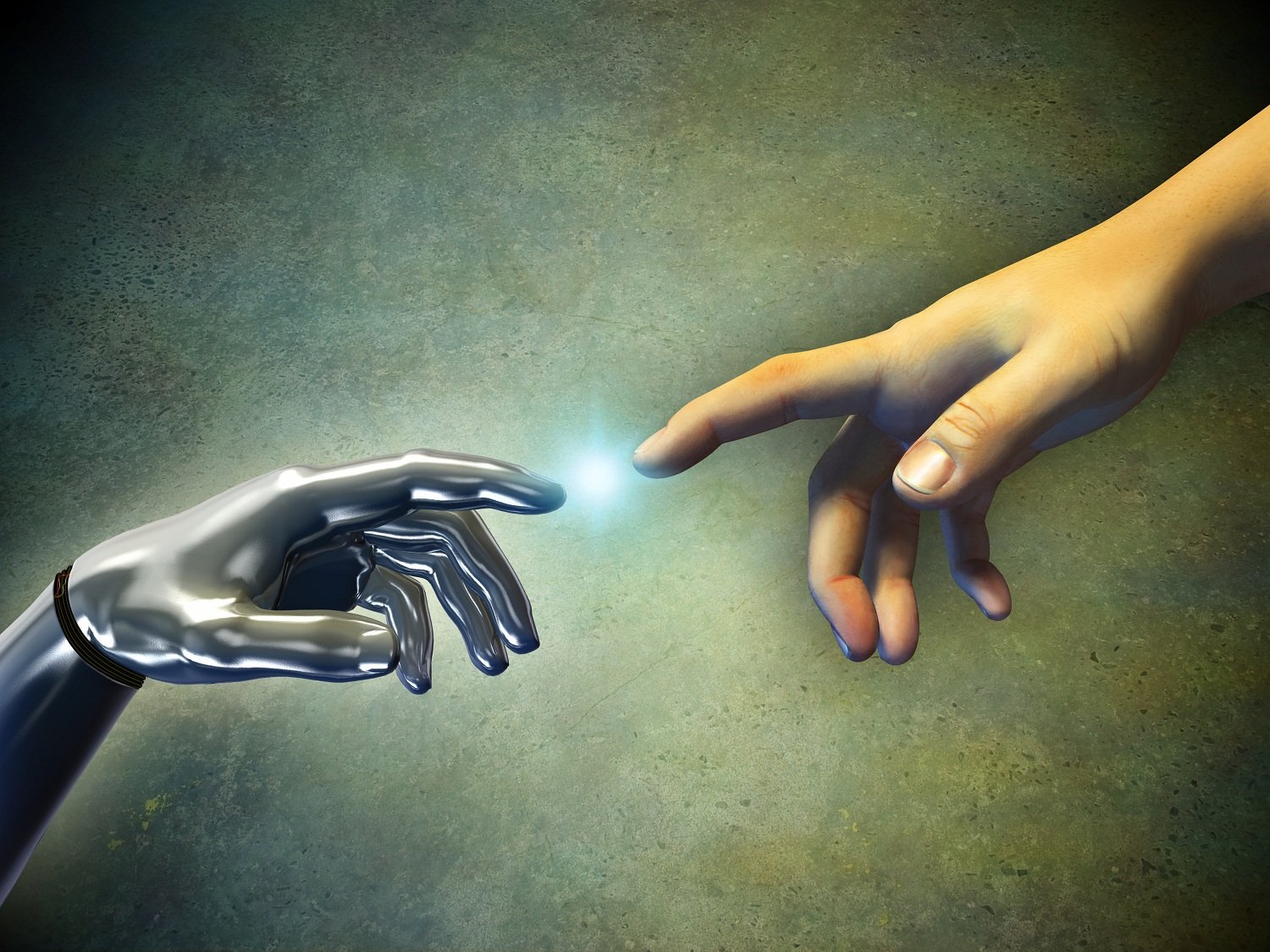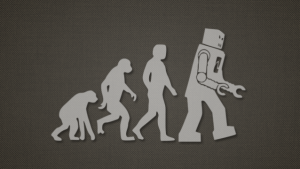The transhumanist: What is the true definition, and what is its future? We are talking about the next stage of human evolution – the immortalisation of humanity; a future where human and machine are one in the same. The transhuman future is one of mass complexity. What happens when people try to idealise that future? When they try to strictly define the future of transhumanism, by attempting to own its very definition?
I argue that by hijacking the very definition of what it means to be a transhumanist, we are creating ideological identities, comparable to that of ancient traditionally conservative religions. I call these identities, ‘transhumanist cultural subgroups’. In an attempt to create movements that help to bring forth a safe transition into a transhuman future, we risk creating irrational ideologies that become resistant to changing their beliefs, even for reasons which are rational – because to do so, would be to betray the community to which they belong.
 There are many factors which would be at play in the creation of a conservative transhuman ideology. What is important is that we recognise these factors, and do not get caught up in attempting to create communities through idealisation, while falling into the trap of ignorance. The potential ignorance of main concern are those relating to security – where we ignore potential security threats due to over optimistically supporting the speed of innovation.
There are many factors which would be at play in the creation of a conservative transhuman ideology. What is important is that we recognise these factors, and do not get caught up in attempting to create communities through idealisation, while falling into the trap of ignorance. The potential ignorance of main concern are those relating to security – where we ignore potential security threats due to over optimistically supporting the speed of innovation.
Now is the perfect time to address the potential problems.
The popularity of transhumanism as an ideology has arguably been on an exponential rise since the 1990’s, as is most notable in the graph below. The graph displays the frequency of which the word transhumanism has featured in published books. I have displayed this graph to compare it to the use of the simple, more ideologically free word, transhuman.
Keyword Frequency in Books
Core Definition
Political scientist, Francis Fukuyama, describes transhumanism as the world’s most dangerous idea. Countering this, science writer Ronald Bailey asserts that it is a “movement that epitomizes the most daring, courageous, imaginative, and idealistic aspirations of humanity”.By simple Oxford definition, transhumanism is defined as, “the belief or theory that the human race can evolve beyond its current physical and mental limitations, especially by means of science and technology”. It is now thought to be pretty inevitable that it will one day be possible for humans to evolve beyond current physical and mental limitations. And so, the definition of a transhumanist should perhaps be limited to people who agree humanity should have the freedom to enhance themselves through technological means. I argue though that this is as far as the definition of a transhumanist should go.
What the above commenters fail to understand is that both arguments stand true. In humanities aspiration for transhuman evolution, we will face huge dangers. Failing to understand those dangers because of over optimism is just as dangerous as ignorantly fighting against innovation though pessimistic fear/paranoia.
 I argue that the optimistic/pessimistic contrast has a charging effect for the calls for transhumanist defence/attack. This in effect encourages people to feel the need to define transhumanism beyond its pure definition. This will generally set those who are for and against transhumanism against one another, when instead they should be working together to create balance where rationality can thrive. Then we have additional motivations, be they cultural, religious or political.
I argue that the optimistic/pessimistic contrast has a charging effect for the calls for transhumanist defence/attack. This in effect encourages people to feel the need to define transhumanism beyond its pure definition. This will generally set those who are for and against transhumanism against one another, when instead they should be working together to create balance where rationality can thrive. Then we have additional motivations, be they cultural, religious or political.
Attempts to Own Transhumanism
We find ourselves asking – who are the transhumanists? What do we/they want? With the answer, we see the creation of new ideologies, cultures, religions and political agendas. In result, transhumanism becomes described as a movement. This has been noted in the definition given by Nick Bostrom, an Oxford University Philosopher, who says transhumanists are loosely defined as a movement. With multiple differing definitions though, given by multiple different organisations, we see the formation of multiple different movements with differing ideals – as I call, transhumanist cultural subgroups. However, this is rarely how it is described; when described as a movement, it is described as a singular movement.
The Transhumanist Declaration
 The main attempt at owning the definition came in 1998, with the first draft of the so called ‘Transhumanist Declaration’, which you can read here. It was drafted for the Humanity+ Non Profit Organisation (formally called, World Transhumanist Association), by an international group of 23 authors/academics, including Nick Bostrom. The declaration is essentially a list of principles. It leaves plenty of room for variation to suit different already existing cultures, and has no political agenda or religious leaning/exclusion. Through allowing pretty much any cultural group to adopt the declaration, it cannot be used to define the ideology of a transhumanist cultural subgroup – a more detailed definition would be needed. The declaration is beneficial as it allows people to officially subscribe to that particular declaration, as to not be potentially tainted by other variations of the transhumanist definition, of which may reflect badly on the person who calls themselves a transhumanist.
The main attempt at owning the definition came in 1998, with the first draft of the so called ‘Transhumanist Declaration’, which you can read here. It was drafted for the Humanity+ Non Profit Organisation (formally called, World Transhumanist Association), by an international group of 23 authors/academics, including Nick Bostrom. The declaration is essentially a list of principles. It leaves plenty of room for variation to suit different already existing cultures, and has no political agenda or religious leaning/exclusion. Through allowing pretty much any cultural group to adopt the declaration, it cannot be used to define the ideology of a transhumanist cultural subgroup – a more detailed definition would be needed. The declaration is beneficial as it allows people to officially subscribe to that particular declaration, as to not be potentially tainted by other variations of the transhumanist definition, of which may reflect badly on the person who calls themselves a transhumanist.
![]() The downside is that it promotes a need to define a transhumanist agenda; other groups may one day write transhumanist declarations of their own, should they feel as though they are ideologically different to the Humanity+ organisation. Differing declarations would be another massive charging factor in the creation of traditional ideologies for transhumanist cultural subgroups; there will be the precedent for competition, and therefore to also defend ideologies, which acts to bind communities in the creation of cultural identities. These defencive ideologies are where we see the birth of the irrational maintenance of expiring traditions/policies.
The downside is that it promotes a need to define a transhumanist agenda; other groups may one day write transhumanist declarations of their own, should they feel as though they are ideologically different to the Humanity+ organisation. Differing declarations would be another massive charging factor in the creation of traditional ideologies for transhumanist cultural subgroups; there will be the precedent for competition, and therefore to also defend ideologies, which acts to bind communities in the creation of cultural identities. These defencive ideologies are where we see the birth of the irrational maintenance of expiring traditions/policies.
Thankfully though, the H+ transhumanist declaration does not itself display any principles that would be incompatible with any cultural identity, and so does not in itself invite need for competition.
Humanity+ Non Profit Organisation
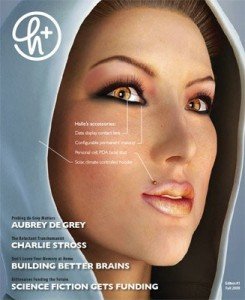 The Humanity+ organisation (H+) is by far the largest transhumanist movement globally. They have became almost synonymous with transhumanism itself. In the academic paper ‘The problem of Transhumanism in the Light of Philosophy and Theology’, the author, Philippe Gagnon, describes H+ and transhumanism as one in the same thing. It is an easy mistake to make, simply due the the name H+ being such a perfect shorthand for transhumanism.
The Humanity+ organisation (H+) is by far the largest transhumanist movement globally. They have became almost synonymous with transhumanism itself. In the academic paper ‘The problem of Transhumanism in the Light of Philosophy and Theology’, the author, Philippe Gagnon, describes H+ and transhumanism as one in the same thing. It is an easy mistake to make, simply due the the name H+ being such a perfect shorthand for transhumanism.
So far I have painted H+ favourably. However, I do see signs that they could inspire the formation of transhumanist cultural subgroups. On the H+ website, they describe transhumanism in more detail than they do in their transhumanist declaration. They call it a philosophy, in which subscribers “seek to live longer, stay healthier, and become smarter and even more physically fit”. This, I believe, is taking the definition too far, in an attempt to ‘own it’. A transhumanist may want to live longer than currently biologically possible, but may not want to be more physically fit than what is currently biologically normal. H+ even goes as far as to say, “we reject the entire idea of “supernatural””. I personally do not completely reject all ideas that may be defined as supernatural, though I do describe myself as a transhumanist. We see an immediate ideological incompatibility with spiritual religions. As result, we already see the need for some transhumanists to distance themselves from H+.
India Future Society
A more extreme example of owning the definition, comes from the India Future Society (IFS). They have a ‘test’ on their website, which it says will tell you if you are a transhumanist. This test features the question: “Do you believe women should not have the right to terminate their pregnancies?”. I see absolutely no way at all that agreeing or not will give any indication to a person’s transhuman persuasion. The other questions are more inline with transhuman issues, although are merely subsets of what a transhumanist might agree to. They appear to have developed a set of criteria that must be met for a person to be considered transhumanist.
Therefore, they become an example of an adapting transhumanist cultural subgroup. The criteria they set will set them apart from the criteria set by other transhumanist cultural subgroups.
Mormonism Merger
 The idea of transhumanism has found an interesting advocate among the Mormon religious and cultural group. The compatibility of transhumanism and Mormonism has inspired the creation of the Mormon Transhumanist Association (MTA). It is here that we see an example of a group creating its own version of transhumanist ideology, rather than attempting to own the original definition.
The idea of transhumanism has found an interesting advocate among the Mormon religious and cultural group. The compatibility of transhumanism and Mormonism has inspired the creation of the Mormon Transhumanist Association (MTA). It is here that we see an example of a group creating its own version of transhumanist ideology, rather than attempting to own the original definition.
What is good about the MTA, is that they make it absolutely clear that their interpretation of transhumanism is not the only version of transhumanism. They do not claim that you must believe x and y to be a transhumanist, and become posthuman.
That doesn’t mean though that it is certain they will always be friendly with those who have differing views about transhuman evolution. Although, it seems that they are on a rational path, while being open to debate.
The Institute for Ethics and Emerging Technologies
The Institute for Ethics and Emerging Technologies (IEET) was founded by Nick Bostrom and James Hughes. It is a think tank and platform for debate about our transhuman future (among other related subjects). They describe themselves as technoprogressive,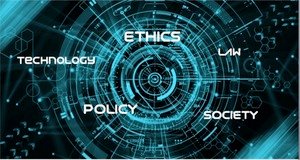 and clearly define where this places them on the political spectrum, with reference to particular policies. Although Kris Notaro, its managing director, is a self-identified anarcho-transhumanist, as an organisation they show clearly that they are open to the political balance between the left and right of the spectrum. They are therefore currently a perfect platform for political transhuman debate. Whether they will later show a more clear bias, is yet to be seen.
and clearly define where this places them on the political spectrum, with reference to particular policies. Although Kris Notaro, its managing director, is a self-identified anarcho-transhumanist, as an organisation they show clearly that they are open to the political balance between the left and right of the spectrum. They are therefore currently a perfect platform for political transhuman debate. Whether they will later show a more clear bias, is yet to be seen.
Anarcho-transhumanism or libertarian-transhumanism, is an anti-capitalist ideology, standing against a perceived oppression from the “elite” (big business). It will therefore invite opposition from capitalism. Studying the organisational structure of the IEET, we see strong links to H+ and the MTA. Sticking to the subject of owning the definition of transhumanism then – the IEET has huge influence. How they adapt as an organisation will have massive impacts on the platform for debate about the transhuman future.
To the Point
We are attempting to create our own groups, with our own ideological ideals. We are taking advantage of the youth of transhumanism by attempting to hijack the definition to suit our own agendas. The problem with that:
It is inevitable that we won’t always agree with each other on all of the upcoming ethical debates that will arise as we move into a transhuman future. What is important though is that we can all debate together as one non-biased and rational unit, in order to agree on best policies to suit all people, rather than one particular culture. The debate must be one where we all talk together about the best future for ‘us’, instead of one where all groups argue with one another about what is best future for themselves.
The foundations for this debate are already being built, for example, with the IEET. The foundations are tainted by anti-capitalism; however, they invite healthy debate with the capitalists, and are happy to voice the capitalist point of view, without the attachment of propaganda. We must focus on maintaining this healthy debate, with just as much passion as we apply to the debate itself.
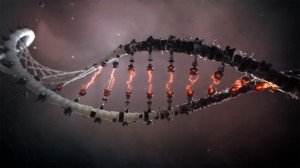 I have displayed some of the seeds currently visible, which could contribute to the development of more cult types of transhumanist cultural subgroups. I would not describe H+ or MTA as one of these cultural subgroups. The H+ transhumanism definition is though a perfect, yet relatively tame, example of a step in the wrong direction. What we see from many transhumanist organisations and their critics, is the creation of a set of rules that must be followed for you to be a member of the group you believe is contributing to a future in which you would like to live.
I have displayed some of the seeds currently visible, which could contribute to the development of more cult types of transhumanist cultural subgroups. I would not describe H+ or MTA as one of these cultural subgroups. The H+ transhumanism definition is though a perfect, yet relatively tame, example of a step in the wrong direction. What we see from many transhumanist organisations and their critics, is the creation of a set of rules that must be followed for you to be a member of the group you believe is contributing to a future in which you would like to live.
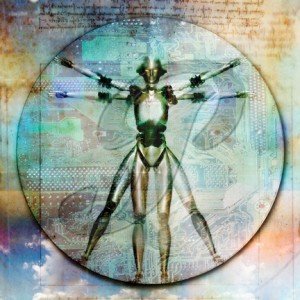 In any social group, social ‘norms’ are developed. These norms become criteria for membership. Even if a person may disagree with certain position the group may take, they generally go along with it because it supports the togetherness of the group, whereby supporting the greater aims of the group, and securing the persons continued membership.
In any social group, social ‘norms’ are developed. These norms become criteria for membership. Even if a person may disagree with certain position the group may take, they generally go along with it because it supports the togetherness of the group, whereby supporting the greater aims of the group, and securing the persons continued membership.
The problem with this, is that you now have groups that hold traditions, becoming resistant to change, resistant to new rational suggestions that may contradict any traditional elements of the groups ideology.
There are examples of groups which are resisting temptations to carve themselves into transhumanist cultural subgroups. Refreshingly, The UK Transhumanist Association define transhumanism in its purest form, and clearly distinguish where the line is that differing ideological and cultural elements begin to add their own bias. This clarity is essential for healthy debate. Those with the power to provide the platform for that debate, must not cross the line over where they could be described as a transhumanist cultural subgroup.
The word ‘transhuman’ unites us just as the word human does. We already have enough ideological conflict on our planet. Evolution is about improvement: Help create a transhuman future that is based on rational debate. Don’t let the lour of powerful organisations, persuade you to ignore your critical thinking.

